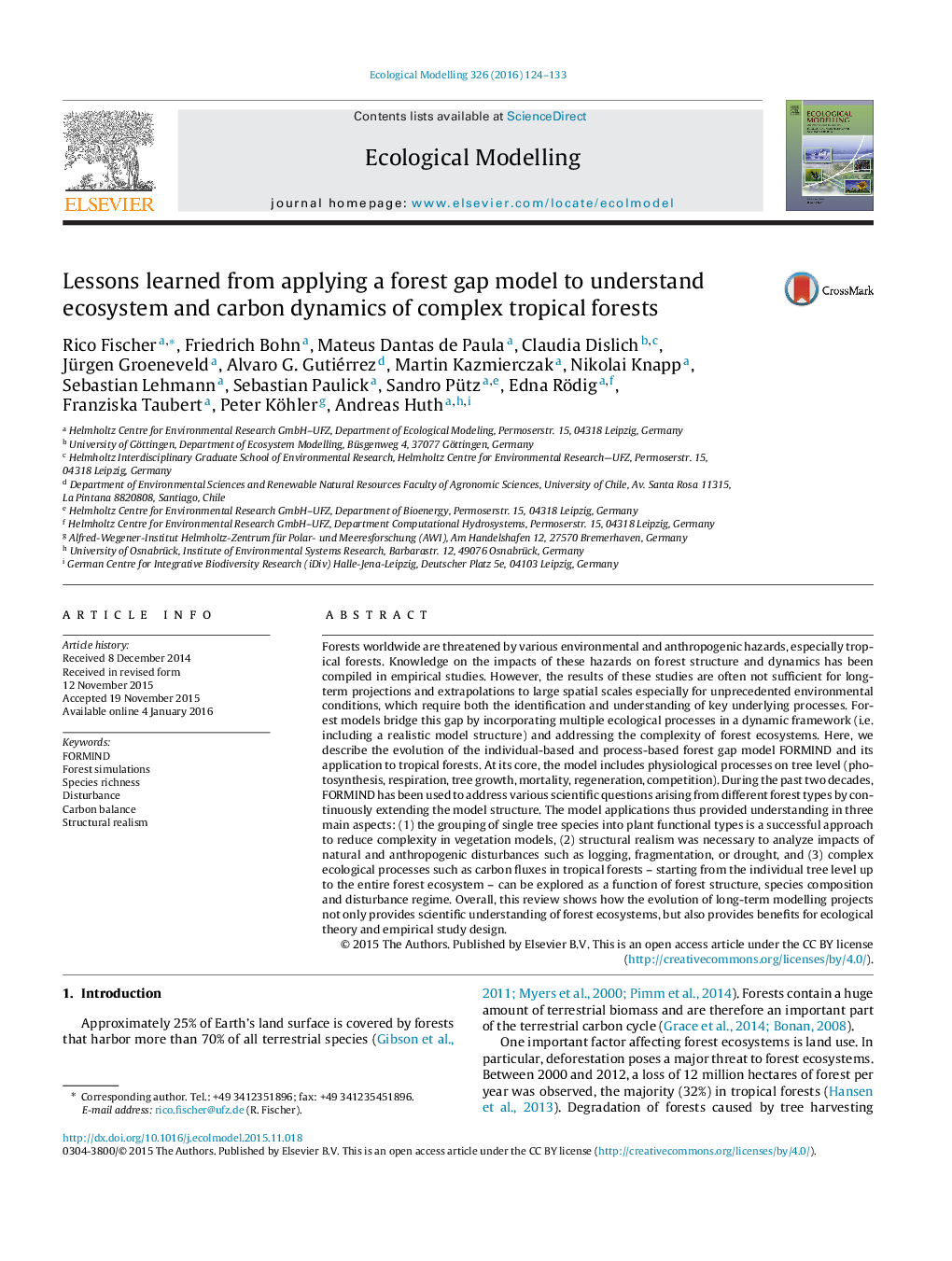| کد مقاله | کد نشریه | سال انتشار | مقاله انگلیسی | نسخه تمام متن |
|---|---|---|---|---|
| 6296351 | 1617421 | 2016 | 10 صفحه PDF | دانلود رایگان |
عنوان انگلیسی مقاله ISI
Lessons learned from applying a forest gap model to understand ecosystem and carbon dynamics of complex tropical forests
ترجمه فارسی عنوان
درسهایی از کاربرد یک مدل شکاف جنگل برای درک اکوسیستم و پوسته کربن جنگل های استوایی است
دانلود مقاله + سفارش ترجمه
دانلود مقاله ISI انگلیسی
رایگان برای ایرانیان
کلمات کلیدی
موضوعات مرتبط
علوم زیستی و بیوفناوری
علوم کشاورزی و بیولوژیک
بوم شناسی، تکامل، رفتار و سامانه شناسی
چکیده انگلیسی
Forests worldwide are threatened by various environmental and anthropogenic hazards, especially tropical forests. Knowledge on the impacts of these hazards on forest structure and dynamics has been compiled in empirical studies. However, the results of these studies are often not sufficient for long-term projections and extrapolations to large spatial scales especially for unprecedented environmental conditions, which require both the identification and understanding of key underlying processes. Forest models bridge this gap by incorporating multiple ecological processes in a dynamic framework (i.e. including a realistic model structure) and addressing the complexity of forest ecosystems. Here, we describe the evolution of the individual-based and process-based forest gap model FORMIND and its application to tropical forests. At its core, the model includes physiological processes on tree level (photosynthesis, respiration, tree growth, mortality, regeneration, competition). During the past two decades, FORMIND has been used to address various scientific questions arising from different forest types by continuously extending the model structure. The model applications thus provided understanding in three main aspects: (1) the grouping of single tree species into plant functional types is a successful approach to reduce complexity in vegetation models, (2) structural realism was necessary to analyze impacts of natural and anthropogenic disturbances such as logging, fragmentation, or drought, and (3) complex ecological processes such as carbon fluxes in tropical forests - starting from the individual tree level up to the entire forest ecosystem - can be explored as a function of forest structure, species composition and disturbance regime. Overall, this review shows how the evolution of long-term modelling projects not only provides scientific understanding of forest ecosystems, but also provides benefits for ecological theory and empirical study design.
ناشر
Database: Elsevier - ScienceDirect (ساینس دایرکت)
Journal: Ecological Modelling - Volume 326, 24 April 2016, Pages 124-133
Journal: Ecological Modelling - Volume 326, 24 April 2016, Pages 124-133
نویسندگان
Rico Fischer, Friedrich Bohn, Mateus Dantas de Paula, Claudia Dislich, Jürgen Groeneveld, Alvaro G. Gutiérrez, Martin Kazmierczak, Nikolai Knapp, Sebastian Lehmann, Sebastian Paulick, Sandro Pütz, Edna Rödig, Franziska Taubert, Peter Köhler,
